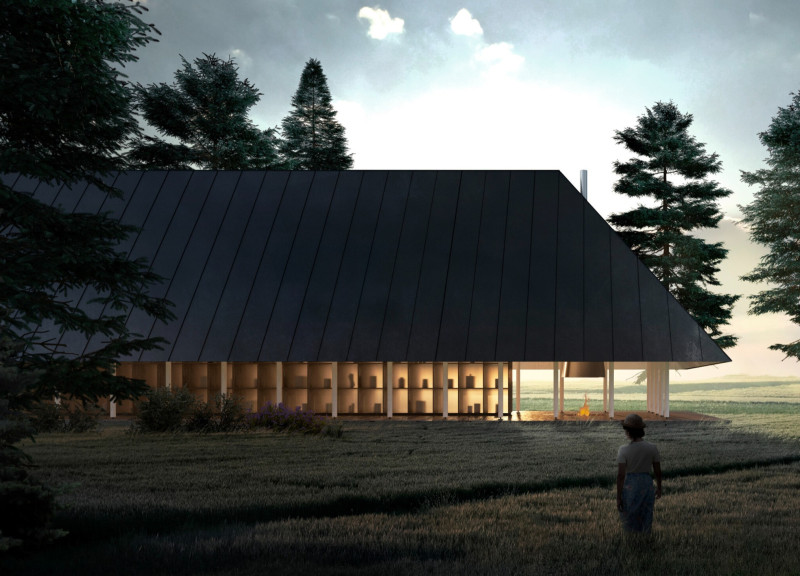5 key facts about this project
The Last Shelter is designed to function as a reflective space for individuals who wish to honor both the living and the dead. Located in a landscape filled with trees and native plants, the structure serves as a form of protection while encouraging contemplation. The overall design emphasizes simplicity, with a clear focus on creating a meaningful environment for visitors to connect with their thoughts and memories.
Architectural Concept
The design is characterized by its straightforward form, prominently displaying a roof that symbolizes safety and shelter. This clarity encourages viewers to conceive the structure in various ways, likening it to a barn, a house, a station, or even a temple. Such diverse interpretations open up discussions about the nature of shelter, emphasizing its role as both an enclosure for protection and a space for reflection.
Site Context and Landscape
The interaction between the building and its environment is an essential aspect of the design. The landscape incorporates existing trees and local plants, which create a natural backdrop for the structure. A gravel path winds through the grassy area, leading visitors around the shelter and inviting them to engage more deeply with their surroundings. This connection with nature enhances the reflective qualities of the space.
Interior Arrangement
Inside the shelter, the focus is on a designated area for urns, utilizing natural stone materials such as travertine. The use of stone contrasts with the lightness of the roof, contributing to a peaceful atmosphere within. A gap between the roof and the floor allows natural light to enter, filling the space with warmth. Visitors are encouraged to connect with their memories in a quiet, intimate setting.
Community and Gathering
The design also includes features that promote social interaction among visitors. A fireplace positioned within the shelter encourages gathering and storytelling. This element adds another layer to the space, balancing moments of solitude with opportunities for connection. Sharing stories alongside the warmth of the fire enriches the experience, transforming the shelter into a venue for collective remembrance.
The structure includes a natural stone shelf for urns, serving as both a practical element and a reminder of the lives it honors. This detail adds emotional weight to the environment, fostering a space where visitors can reflect on their connections to those who have passed.






















































